
(908) 381-8160Berkeley Heights

Our feet are important in our everyday lives. The problem is that we tend to neglect them. When this becomes a habit, it can cause significant trouble. Ignoring foot problems can mean pain, limited mobility, and expensive doctor's visits. On the other hand, if feet are cared for and looked after regularly, they will perform without pain or complication.
Routine hygiene is the most basic way to care for the feet. Wash and dry them thoroughly daily. Remember to get between the toes and keep the toenails trimmed and short. If the feet feel dry or there are signs of dryness or cracking, use a moisturizer designed for the feet.
When using moisturizer on the feet, try to avoid applying between the toes. If cream or lotion sits too long, they can cause fungal and bacterial growth. When moisturizer is used between the toes, it can also cause the skin to soften too much.
Shoes are also an important aspect of foot care. When one is picking out shoes, make sure they are the correct size. Shoes need to be snug, but not too tight. On the other hand, if shoes are too loose they can cause foot problems as well. It is highly recommended that shopping for new shoes be done later in the day. The reason for this is that the feet will have settled and swelled to their full size by then. To keep your feet at their most healthy, avoid wearing high heels or flip flops too often. Instead, choose shoes that are good for your feet. Good shoes pad the soles of your feet and support the arches and ankles.
Socks should also be worn daily with closed-toe shoes. They may feel hot during the summer months, but they absorb sweat and moisture off the feet. Without socks, the build-up of sweat in a closed-toe shoe can cause fungal problems and athlete's foot.
The best thing to remember in every day foot care is that shoes do make a difference. If you spend a lot of time on your feet, make sure that your shoes show no signs of wear. Shoes should offer ample support for the arches and the overall foot. Additionally, try to make foot cleaning and maintenance a daily habit. If you keep these things in mind, your feet will stay healthy and safe.
Although rheumatoid arthritis attacks multiple bones and joints throughout the entire body, ninety percent of people who actually develop this condition usually do so in the foot or ankle area. Those who develop this kind of arthritis in the feet usually develop symptoms around the toes and forefeet first, before anywhere else. Rheumatoid arthritis appears to have a genetic component. If it runs in the family, then you will be more likely to develop it as well.
Rheumatoid arthritis is an autoimmune disorder in which the body’s own immune system attacks the lining of the membranes surrounding the joints. This causes inflammation of the membrane lining, and the gradual destruction of the joint’s cartilage and even bone.
Some of the most common symptoms that are associated with RA include pain and swelling of the feet. Stiffness in the feet is also another common symptom that people experience. Those who have RA in the feet usually feel the pain in the ball or sole of their feet. This can get to be very painful at times. A person's joints can even shift and become deformed after a period of time.
In order to properly diagnose RA in the feet it is usually necessary for a doctor or podiatrist to evaluate the area. Your doctor will also question you about your medical history, occupation, etc., to determine whether anything in your lifestyle may have triggered the condition. There are a number of tests that may be performed to help diagnose RA, such as a rheumatoid factor test. There is, however, no one single test that will tell you for sure if you have RA. There are different X-rays that can be taken as well to determine if a person has RA in their feet.
There is a range of treatment options for rheumatoid arthritis. Treatment of RA is usually a lifelong process that includes a variety of methods of treatment and therapy. Your doctor can prescribe special shoes that should help with arch support as well as heel support. A physical therapist can help those with this condition learn exercises which will keep their joints flexible. Surgery may be needed to correct some of the issues with the feet, such as bunions, and hammertoes. Fusion is usually the most successful surgical option for rheumatoid arthritis. However, people need to keep in mind that there are some risks associated with these surgeries.
Have you ever gotten up from a chair or out of bed in the morning, and upon taking that first step, feel like your heel has stepped on a tack? Many people experience a feeling of sharp pain which radiates into their arch from their heel and which does not allow them to put their heel on the floor. Sometimes they need to sit back down, stand only on their toes and use the wall for balance. If you can take a few steps, it seems to go away and lessen, allowing you to then resume your activity. Later, throughout your day and after a period of rest, it can happen again. If this sounds familiar you may be suffering from your first attack of heel pain.
Heel pain is a debilitating condition that affects day to day activities. Running and walking both causes stress on the heel because the heel is the part of the foot that hits the ground first. This means that the heel is taking on your entire weight. Diagnosis and treatments for heel pain can be easily found through your podiatrist.
Plantar Fasciitis
One of the main causes of heel pain is a condition known as plantar fasciitis. The plantar fascia is a band of tissue that extends along the bottom of the foot, from the toe to the bottom of the heel. A rip or tear in this ligament can cause inflammation of these tissues, resulting in heel pain. People who do not wear proper fitting shoes are often at risk of developing problems such as plantar fasciitis. Unnecessary stress from ill-fitting shoes, weight change, excessive running, and wearing non-supportive shoes on hard surfaces are all causes of plantar fasciitis.
Achilles Tendonitis
Achilles tendonitis is another cause of heel pain. Similar to plantar fasciitis, inflammation of the Achilles tendon will cause heel pain due to stress fractures and muscle tearing. A lack of flexibility of the ankle and heel is an indicator of Achilles tendonitis. If left untreated, this condition can lead to plantar fasciitis and cause even more pain on your heel.
Heel Spur
A third cause of heel pain is a heel spur. A heel spur occurs when the tissues of the plantar fascia undergo a great deal of stress, leading to a separation of the ligament from the heel bone entirely. This results in a pointed fragment of bone on the ball of the foot, known as a heel spur.
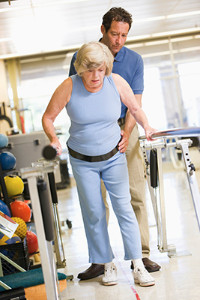 Elderly Americans are at an increased risk of falling than younger Americans. Falls are a leading cause of injury among the elderly, therefore it is important for older persons to know how to prevent them in the first place. Staying active through exercising is an excellent way to stay flexible, mobile, and strong. There are exercise groups all over the country that help older people stay in shape. Make sure to clear any debris from the floor that can make tripping more likely. Lighting is another important aspect in preventing falls in the home. Installing night lights that turn on automatically in and near the restroom can help prevent falls during late-night bathroom trips. Going to routine check-ups with a doctor is advised as well, and it is important to ask if any prescribed medications can cause drowsiness or lightheadedness. Finally, have one’s eyes and hearing checked regularly to help maintain alertness. Falls pose a unique risk to older citizens, and knowing how to prevent them can make all the difference.
Elderly Americans are at an increased risk of falling than younger Americans. Falls are a leading cause of injury among the elderly, therefore it is important for older persons to know how to prevent them in the first place. Staying active through exercising is an excellent way to stay flexible, mobile, and strong. There are exercise groups all over the country that help older people stay in shape. Make sure to clear any debris from the floor that can make tripping more likely. Lighting is another important aspect in preventing falls in the home. Installing night lights that turn on automatically in and near the restroom can help prevent falls during late-night bathroom trips. Going to routine check-ups with a doctor is advised as well, and it is important to ask if any prescribed medications can cause drowsiness or lightheadedness. Finally, have one’s eyes and hearing checked regularly to help maintain alertness. Falls pose a unique risk to older citizens, and knowing how to prevent them can make all the difference.
Preventing falls among the elderly is very important. If you are older and have fallen or fear that you are prone to falling, consult with Dr. Janet Leicht from New Jersey. Our doctor will assess your condition and provide you with quality advice and care.
Every 11 seconds, an elderly American is being treated in an emergency room for a fall related injury. Falls are the leading cause of head and hip injuries for those 65 and older. Due to decreases in strength, balance, senses, and lack of awareness, elderly persons are very susceptible to falling. Thankfully, there are a number of things older persons can do to prevent falls.
How to Prevent Falls
Some effective methods that older persons can do to prevent falls include:
Falling can be a traumatic and embarrassing experience for elderly persons; this can make them less willing to leave the house, and less willing to talk to someone about their fears of falling. Doing such things, however, will increase the likelihood of tripping or losing one’s balance. Knowing the causes of falling and how to prevent them is the best way to mitigate the risk of serious injury.
If you have any questions, please feel free to contact our office located in Berkeley Heights, NJ . We offer the newest diagnostic and treatment technologies for all your foot care needs.
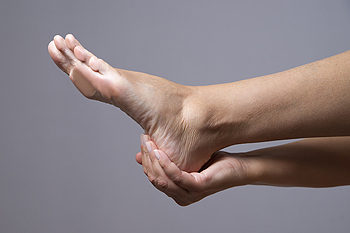 Foot pain can be a very debilitating condition to experience. First, however, it is important to figure out what is causing it. Plantar fasciitis is one of the most common causes of heel pain. Standing for long periods of time and overuse can cause the plantar fascia to become inflamed. Plantar fasciitis can affect anyone. Thankfully there are a number of treatments available for heel pain, with many of them being very easy to do. Keeping pressure off the feet, resting, and avoiding overuse can improve the condition of many who suffer from plantar fasciitis. Another method for treating heel pain includes buying a new pair of well-fitted shoes. Look for a pair that is not too tight or loose for your feet. Shoes should also have enough space in the toe box for your toes to wiggle around. Finally, look for a pair that is comfortable and that would be fine to wear for long periods of time. If you have heel or general foot pain that will not go away, see a podiatrist for a diagnosis and proper treatment.
Foot pain can be a very debilitating condition to experience. First, however, it is important to figure out what is causing it. Plantar fasciitis is one of the most common causes of heel pain. Standing for long periods of time and overuse can cause the plantar fascia to become inflamed. Plantar fasciitis can affect anyone. Thankfully there are a number of treatments available for heel pain, with many of them being very easy to do. Keeping pressure off the feet, resting, and avoiding overuse can improve the condition of many who suffer from plantar fasciitis. Another method for treating heel pain includes buying a new pair of well-fitted shoes. Look for a pair that is not too tight or loose for your feet. Shoes should also have enough space in the toe box for your toes to wiggle around. Finally, look for a pair that is comfortable and that would be fine to wear for long periods of time. If you have heel or general foot pain that will not go away, see a podiatrist for a diagnosis and proper treatment.
Many people suffer from bouts of heel pain. For more information, contact Dr. Janet Leicht of New Jersey. Our doctor can provide the care you need to keep you pain-free and on your feet.
Causes of Heel Pain
Heel pain is often associated with plantar fasciitis. The plantar fascia is a band of tissues that extends along the bottom of the foot. A rip or tear in this ligament can cause inflammation of the tissue.
Achilles tendonitis is another cause of heel pain. Inflammation of the Achilles tendon will cause pain from fractures and muscle tearing. Lack of flexibility is also another symptom.
Heel spurs are another cause of pain. When the tissues of the plantar fascia undergo a great deal of stress, it can lead to ligament separation from the heel bone, causing heel spurs.
Why Might Heel Pain Occur?
Treatments
Heel pain should be treated as soon as possible for immediate results. Keeping your feet in a stress-free environment will help. If you suffer from Achilles tendonitis or plantar fasciitis, applying ice will reduce the swelling. Stretching before an exercise like running will help the muscles. Using all these tips will help make heel pain a condition of the past.
If you have any questions please contact our office located in Berkeley Heights, NJ . We offer the newest diagnostic and treatment technologies for all your foot and ankle needs.
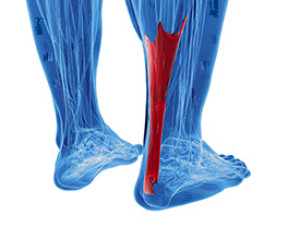 The Achilles tendon, while the largest and thickest tendon in the body, is prone to being injured just like any body part. Tendinopathy, the breakdown of the tendon, generally occurs from overuse—especially from athletic activities. In some cases, the tendon can even rupture completely. While overuse directly causes the injury, there are other factors that increase the risk. These factors include bending the foot backwards, or dorsiflexion, weak calf muscles, and pronation. Compared to other muscle recoveries, tendons take longer to heal and can even take up to a year to fully recover. While anti-inflammatory medication may bring relief, it will not heal the injury. Ultimately, the best thing to do for an Achilles tendon injury is to see a podiatrist. Podiatrists offer the best treatment options and recovery programs for such injuries, and they can help patients heal properly so they can get back in the game.
The Achilles tendon, while the largest and thickest tendon in the body, is prone to being injured just like any body part. Tendinopathy, the breakdown of the tendon, generally occurs from overuse—especially from athletic activities. In some cases, the tendon can even rupture completely. While overuse directly causes the injury, there are other factors that increase the risk. These factors include bending the foot backwards, or dorsiflexion, weak calf muscles, and pronation. Compared to other muscle recoveries, tendons take longer to heal and can even take up to a year to fully recover. While anti-inflammatory medication may bring relief, it will not heal the injury. Ultimately, the best thing to do for an Achilles tendon injury is to see a podiatrist. Podiatrists offer the best treatment options and recovery programs for such injuries, and they can help patients heal properly so they can get back in the game.
Achilles tendon injuries need immediate attention to avoid future complications. If you have any concerns, contact Dr. Janet Leicht of New Jersey. Our doctor can provide the care you need to keep you pain-free and on your feet.
What Is the Achilles Tendon?
The Achilles tendon is a tendon that connects the lower leg muscles and calf to the heel of the foot. It is the strongest tendon in the human body and is essential for making movement possible. Because this tendon is such an integral part of the body, any injuries to it can create immense difficulties and should immediately be presented to a doctor.
What Are the Symptoms of an Achilles Tendon Injury?
There are various types of injuries that can affect the Achilles tendon. The two most common injuries are Achilles tendinitis and ruptures of the tendon.
Achilles Tendinitis Symptoms
Rupture Symptoms
Treatment and Prevention
Achilles tendon injuries are diagnosed by a thorough physical evaluation, which can include an MRI. Treatment involves rest, physical therapy, and in some cases, surgery. However, various preventative measures can be taken to avoid these injuries, such as:
If you have any questions please feel free to contact our office located in Berkeley Heights, NJ . We offer the newest diagnostic tools and technology to treat your foot and ankle needs.
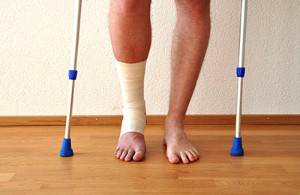 Cornerback Ronald Darby of the Philadelphia Eagles recently suffered an ankle injury during the Redskins vs Eagles game. It is unfortunate for Darby that the injury occurred during the first game of the season. Though he is expected to be out for around four to six weeks, he will not need to undergo surgery. Fortunately, Darby’s injury didn’t seem to slow down the Eagles; they won 30 to 17 over the Washington Redskins.
Cornerback Ronald Darby of the Philadelphia Eagles recently suffered an ankle injury during the Redskins vs Eagles game. It is unfortunate for Darby that the injury occurred during the first game of the season. Though he is expected to be out for around four to six weeks, he will not need to undergo surgery. Fortunately, Darby’s injury didn’t seem to slow down the Eagles; they won 30 to 17 over the Washington Redskins.
Sports related foot and ankle injuries require proper treatment before players can go back to their regular routines. For more information, contact Dr. Janet Leicht of New Jersey. Our doctor can provide the care you need to keep you pain-free and on your feet.
Sports Related Foot and Ankle Injuries
Foot and ankle injuries are a common occurrence when it comes to athletes of any sport. While many athletes dismiss the initial aches and pains, the truth is that ignoring potential foot and ankle injuries can lead to serious problems. As athletes continue to place pressure and strain the area further, a mild injury can turn into something as serious as a rupture and may lead to a permanent disability. There are many factors that contribute to sports related foot and ankle injuries, which include failure to warm up properly, not providing support or wearing bad footwear. Common injuries and conditions athletes face, including:
Sports related injuries are commonly treated using the RICE method. This includes rest, applying ice to the injured area, compression and elevating the ankle. More serious sprains and injuries may require surgery, which could include arthroscopic and reconstructive surgery. Rehabilitation and therapy may also be required in order to get any recovering athlete to become fully functional again. Any unusual aches and pains an athlete sustains must be evaluated by a licensed, reputable medical professional.
If you have any questions please feel free to contact our office located in Berkeley Heights, NJ . We offer the newest diagnostic and treatment technologies for all your foot and ankle needs.
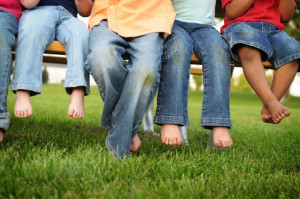 When it comes to picking the right shoes, children are much more different than adults. Children’s feet are still growing and developing compared to adult feet. With this in mind, it is important for parents to make sure that their children’s shoes properly fit them. If your child is having a growth spurt, they can quickly outgrow the shoes they wear even if they are relatively new. Children’s shoes should be flexible and have enough space for their toes to move around. They also need to provide good foot support and cushion for comfort. Shoes should be comfortable even after wearing them for hours. Finally, knowing when to wear the right shoe is vital. Sandals or flip-flops are fine for the beach but not for wearing all day. If your child plays sports, they need high performance shoes that can handle the stress. Parents should routinely check their children’s shoes to make sure they properly fit.
When it comes to picking the right shoes, children are much more different than adults. Children’s feet are still growing and developing compared to adult feet. With this in mind, it is important for parents to make sure that their children’s shoes properly fit them. If your child is having a growth spurt, they can quickly outgrow the shoes they wear even if they are relatively new. Children’s shoes should be flexible and have enough space for their toes to move around. They also need to provide good foot support and cushion for comfort. Shoes should be comfortable even after wearing them for hours. Finally, knowing when to wear the right shoe is vital. Sandals or flip-flops are fine for the beach but not for wearing all day. If your child plays sports, they need high performance shoes that can handle the stress. Parents should routinely check their children’s shoes to make sure they properly fit.
Making sure that your children maintain good foot health is very important as they grow. If you have any questions, contact Dr. Janet Leicht of New Jersey. Our doctor can provide the care you need to keep you pain-free and on your feet.
Keeping Children's Feet Healthy
Having healthy feet during childhood can help prevent medical problems later in life, namely in the back and legs. As children grow, their feet require different types of care. Here are some things to consider...
Although babies do not walk yet, it is still very important to take care of their feet.
Avoid putting tight shoes or socks on his or her feet.
Allow the baby to stretch and kick his or her feet to feel comfortable.
As a toddler, kids are now on the move and begin to develop differently. At this age, toddlers are getting a feel for walking, so don’t be alarmed if your toddler is unsteady or ‘walks funny’.
As your child gets older, it is important to teach them how to take care of their feet.
Show them proper hygiene to prevent infections such as fungus.
Be watchful for any pain or injury.
Have all injuries checked by a doctor as soon as possible.
Comfortable, protective shoes should always be worn, especially at play.
If you have any questions please feel free to contact our office located in Berkeley Heights, NJ . We offer the newest diagnostic and treatment technologies for all your foot and ankle needs.
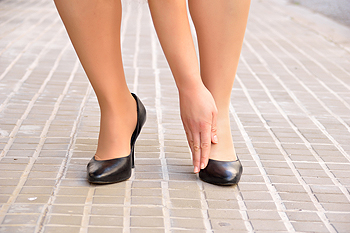 While women often have a diverse range of footwear, some of these shoes can be very dangerous for the feet. The worst shoes that can be found in a woman’s closet are stilettos, ballet flats, and flip-flops. The danger in stilettos stems from the fact that they force all of your weight onto one part of the shoe. When you wear stilettos, your foot is being placed into an unnatural position that can disrupt your overall balance. Ballet flats are also bad because they fail to provide proper arch support for your feet. Flip-flops also fail to give arch support, and have the potential to cause a common foot condition called plantar fasciitis.
While women often have a diverse range of footwear, some of these shoes can be very dangerous for the feet. The worst shoes that can be found in a woman’s closet are stilettos, ballet flats, and flip-flops. The danger in stilettos stems from the fact that they force all of your weight onto one part of the shoe. When you wear stilettos, your foot is being placed into an unnatural position that can disrupt your overall balance. Ballet flats are also bad because they fail to provide proper arch support for your feet. Flip-flops also fail to give arch support, and have the potential to cause a common foot condition called plantar fasciitis.
Everyday foot care is very important to prevent infection and other foot ailments. If you need your feet checked, contact Dr. Janet Leicht from New Jersey. Our doctor can provide the care you need to keep you pain-free and on your feet.
Everyday Foot Care
Often, people take care of their bodies, face and hair more so than they do for their feet. But the feet are a very important aspect of our bodies, and one that we should pay more attention to. Without our feet, we would not be able to perform most daily tasks.
It is best to check your feet regularly to make sure there are no new bruises or cuts that you may not have noticed before. For dry feet, moisturizer can easily be a remedy and can be applied as often as necessary to the affected areas. Wearing shoes that fit well can also help you maintain good foot health, as well as making it easier to walk and do daily activities without the stress or pain of ill-fitting shoes, high heels, or even flip flops. Wearing clean socks with closed shoes is important to ensure that sweat and bacteria do not accumulate within the shoe. Clean socks help to prevent Athlete’s foot, fungi problems, bad odors, and can absorb sweat.
If you have any questions please feel free to contact our office located in Berkeley Heights, NJ . We offer the newest diagnostic and treatment technologies for all your foot and ankle needs.
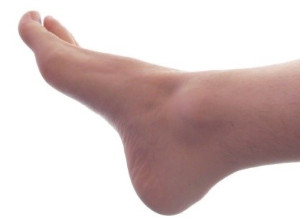 Plantar warts are caused by the human papillomavirus (HPV). This virus thrives in warm, damp environments such as gym showers or other public facilities. In special cases, untreated plantar warts may develop into methicillin-resistant staphylococcus aureus (MRSA). Although sometimes plantar warts may go away on their own, if they are chronic or become painful you should consult with a podiatrist to go over treatment options.
Plantar warts are caused by the human papillomavirus (HPV). This virus thrives in warm, damp environments such as gym showers or other public facilities. In special cases, untreated plantar warts may develop into methicillin-resistant staphylococcus aureus (MRSA). Although sometimes plantar warts may go away on their own, if they are chronic or become painful you should consult with a podiatrist to go over treatment options.
Plantar warts can be very uncomfortable. If you need your feet checked, contact Dr. Janet Leicht from New Jersey. Our doctor will assist you with all of your foot and ankle needs.
About Plantar Warts
Plantar warts are the result of HPV, or human papillomavirus, getting into open wounds on the feet. They are mostly found on the heels or balls of the feet.
While plantar warts are generally harmless, those experiencing excessive pain or those suffering from diabetes or a compromised immune system require immediate medical care. Plantar warts are easily diagnosed, usually through scraping off a bit of rough skin or by getting a biopsy.
Symptoms
Treatment
To help prevent developing plantar warts, avoid walking barefoot over abrasive surfaces that can cause cuts or wounds for HPV to get into. Avoiding direct contact with other warts, as well as not picking or rubbing existing warts, can help prevent the further spread of plantar warts. However, if you think you have developed plantar warts, speak to your podiatrist. He or she can diagnose the warts on your feet and recommend the appropriate treatment options.
If you have any questions please feel free to contact our office located in Berkeley Heights, NJ . We offer the newest diagnostic and treatment technologies for all your foot and ankle needs.